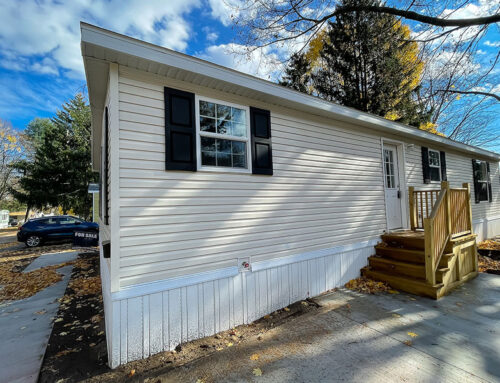These days, I have to make an extra effort to use my time wisely. If you’re even half as busy as I am, you’ve probably felt the same—especially if you’re a real estate investor in New York City. The “To Do” lists never end, do they? Even so, I try to make the time for new or struggling investors who may need advice on renovating their real estate investment property in Queens or how to start a real estate investment business anywhere in the Big Apple. Just today, I was asked by a young investor named Chip if flipping houses in NYC is the best investment niche to get into. Although I was heading out to sign a new contract on a single-family home, I took the time to answer.
Flipping Houses in NYC Compared to Other Investment Market Niches
Several years ago, I started buying, renovating, and selling houses in the up and coming neighborhoods of Highbridge, Morris Heights, and Fieldston. Now, I’ve always loved investing in the Bronx—even before it was hip to do so—but, I’ve got a special place in my heart for any neighborhood that is struggling to come back to life. In these, and many other areas around the city, crime rates are going down and median home sales prices are going up. By being a responsible real estate investor, I’ve helped to facilitate some of these changes.
That’s not to say that increasing your returns isn’t as important as improving neighborhoods, because it is. But, is flipping houses the best market niche for creating the greatest impact—on your pocketbook and in transitioning communities? Or, should you consider the luxury and multi-family sectors as well? Here’s what I shared with Chip.
Luxury Properties
The luxury sector appeals to many real estate investors because, in theory, higher sales prices equal higher returns. In practice, however, it’s often a different story. The cost to buy and renovate a luxury apartment, condo, or home tends to be exceptionally high compared to other residential real estate sectors, like single-family homes. In addition, the luxury housing market is usually more volatile than other sectors, making your timing in the market cycle more critical. If you don’t buy and renovate at the right time, you could get caught holding a property during a market correction and see a lower-than-expected ROI when it’s time to sell.
And, unfortunately, the luxury sector in New York City appears to be on the downturn lately. Both the median sales price and the average sales price for new and renovated luxury housing in Manhattan, for example, have fallen by more than 15% since last year. In correlation, inventory has risen twice as fast as the rest of the market. This is due, in large part, to the glut of new development, particularly in Manhattan. But, despite decreased prices and increased inventory, Manhattan properties are staying on the market longer—50% longer than last year.
So, although falling prices may prompt you to buy, it might prove difficult to offload a property in the short-term if homebuyers aren’t biting. If you’re willing to buy and hold a luxury home until you have some certainty that the market will go up again, you’ll have a better chance of seeing a good ROI. But, nothing is certain and there’s a lot of money to be lost in this niche if you don’t get lucky. And, you certainly won’t be contributing to the improvement of a neighborhood by owning a property that sits vacant for months.
Multi-family Housing
Buying and holding multi-family units may cast a wider net of appeal than luxury housing because, though they can also be costly to purchase, they have the potential to produce passive income. And, in up-and-coming areas where the majority of residents are renters, like several neighborhoods in Queens, the probability that your rentals will experience high vacancy rates are low. With the new limits on property tax deductions coming into play this year, it’s easy to think that more people will start to forgo homeownership in favor of renting as a cost-saving measure. The increased competition for rentals could, in theory then, allow you to raise rents to achieve an even better NYC cap rate.
In many areas around the city, however, rent prices are actually on the decline and move-in incentives are on the rise as landlords scramble to fill vacancies. Manhattan and Brooklyn, especially, have become a renter’s market thanks to a surplus in supply. Rents in these boroughs have dropped significantly even with concessions, like free rent, being offered. Long vacancies are problematic in that they negatively impact the monthly income generated by a property, but reduced and free rents do the same. And, when you decide to sell, you’ll find that lower rents won’t help you realize higher returns. In fact, the value of your property could take a dive—and take the value of nearby properties with it.
Single-family Homes
Unlike investing in the luxury and multi-family sectors, when you buy, renovate, and sell single-family houses, you increase your chances of seeing good returns and in participating in the improvement of an up-and-coming NYC neighborhood. First of all, your initial investment of buying and rehabbing in a single-family home can be low compared to both luxury properties and multi-family housing. Additionally, you can be in and out of a property pretty fast. This reduces your risk of having to contend with selling during a potentially unstable future market, but it also helps to boost nearby property values more quickly when you do sell. And, since there are more buyers who can afford single-family homes than luxury housing, you are likely to experience less hassle when it’s time to sell. If you can find distressed properties in neighborhoods like Bedford Park, Norwood, and Douglaston, you’ll also be able to take advantage of the growing interest in homeownership in these, and other, transitioning parts of town and further contribute to their improvement.
Of course, buying, renovating, and selling houses not only gives neighborhoods, and your returns, a potential boost, it improves the lives of homeowners who can no longer afford their properties. Though foreclosure activity is down overall across the U.S., foreclosure starts are up, and above pre-recession levels, in New York this year, according to ATTOM Data Solutions. If you can reach these homeowners before they lose their homes, you can help them keep a bad situation from getting worse.
I think it’s pretty clear that, in New York, flipping houses is a good business to be in—for you, the distressed homeowners you serve, and the neighborhoods you help to save. That may sound like an exaggeration, but when you’ve seen it in action, like I have, it’s inspiring. Of course, to keep on winning, you’ve got to keep finding motivated sellers of distressed homes.
The Clear Winner for Finding Distressed Single Family Homes
In my experience, repeatedly finding motivated sellers of distressed single-family homes isn’t difficult. But, I can say that because I’m an independently owned and operated HomeVestors® franchisee. See, homeowners who need or want to sell their home fast know where to find me because of the nationally-recognized “We Buy Ugly Houses®” ad campaign. It’s one of the best marketing strategies for generating leads. But, maybe more importantly, there are even fewer real estate investing companies as committed to making sure everyone wins.
Let’s talk more about how to improve neighborhoods and your returns. Call HomeVestors® today to make buying, renovating, and selling houses your investment niche.
Each franchise office is independently owned and operated.
Contact
"*" indicates required fields





